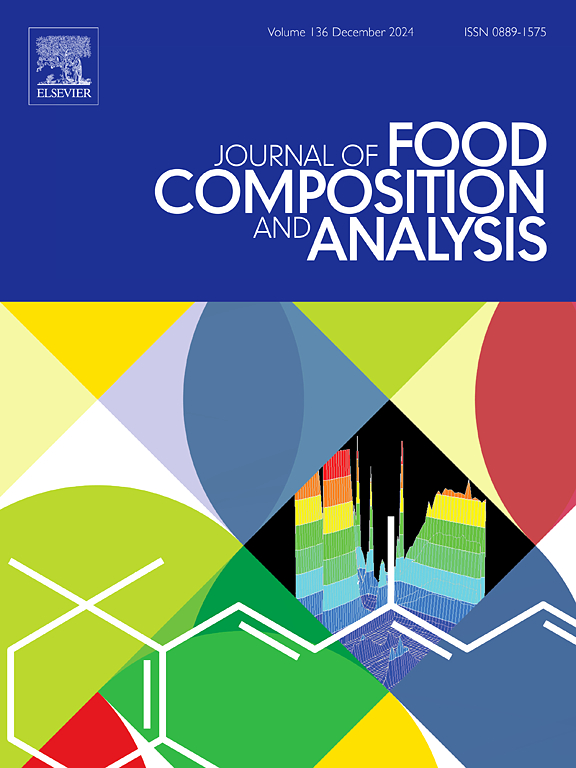Flower-like β-Bi2O3 microsphere/multiwalled carbon nanotube composite for sensitive detection of carcinogenic Rhodamine B in chili oil
IF 4
2区 农林科学
Q2 CHEMISTRY, APPLIED
引用次数: 0
Abstract
Rhodamine B (RhB) is highly carcinogenic and is therefore prohibited as a food colorant. Hence, it is necessary to establish a simple but effective technique for the sensitive determination of RhB in foodstuff. Herein, an efficient voltammetric platform was established for the detection of RhB in chili oil based on flower-like β-Bi2O3 microsphere/multiwalled carbon nanotube composites (β-Bi2O3/MWCNTs). Various microscopic and spectroscopic techniques confirmed the successful formation of β-Bi2O3/MWCNTs. Owing to the synergistic effect from β-Bi2O3 microspheres and MWCNTs, the β-Bi2O3/MWCNTs demonstrated superior electrocatalytic activity for the oxidation of RhB as compared to the individual components. Electrochemical kinetics tests confirmed that the RhB electrooxidation was governed by an irreversible and adsorption-controlled process, and involved two electrons one proton transfer pathway. The oxidation peak currents of RhB were linearly correlated with RhB concentrations ranging from 0.05 to 100 μM with a low limit of detection (0.002 μM). The β-Bi2O3/MWCNT demonstrated strong anti-interfering ability against other azo colorants, and retained robust voltammetric responses for at least 14 days. Moreover, the concentrations of RhB in chili oil were accurately detected by the β-Bi2O3/MWCNT via second-order derivative linear scan voltammetry with satisfactory recovery. Overall, the β-Bi2O3/MWCNT/GCE shows great potential for in-situ analysis of trace amounts of RhB in various food matrices.
求助全文
约1分钟内获得全文
求助全文
来源期刊

Journal of Food Composition and Analysis
工程技术-食品科技
CiteScore
6.20
自引率
11.60%
发文量
601
审稿时长
53 days
期刊介绍:
The Journal of Food Composition and Analysis publishes manuscripts on scientific aspects of data on the chemical composition of human foods, with particular emphasis on actual data on composition of foods; analytical methods; studies on the manipulation, storage, distribution and use of food composition data; and studies on the statistics, use and distribution of such data and data systems. The Journal''s basis is nutrient composition, with increasing emphasis on bioactive non-nutrient and anti-nutrient components. Papers must provide sufficient description of the food samples, analytical methods, quality control procedures and statistical treatments of the data to permit the end users of the food composition data to evaluate the appropriateness of such data in their projects.
The Journal does not publish papers on: microbiological compounds; sensory quality; aromatics/volatiles in food and wine; essential oils; organoleptic characteristics of food; physical properties; or clinical papers and pharmacology-related papers.
 求助内容:
求助内容: 应助结果提醒方式:
应助结果提醒方式:


